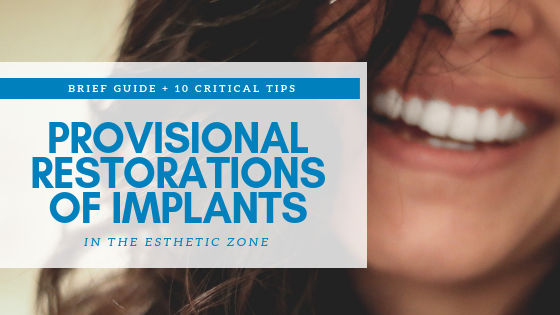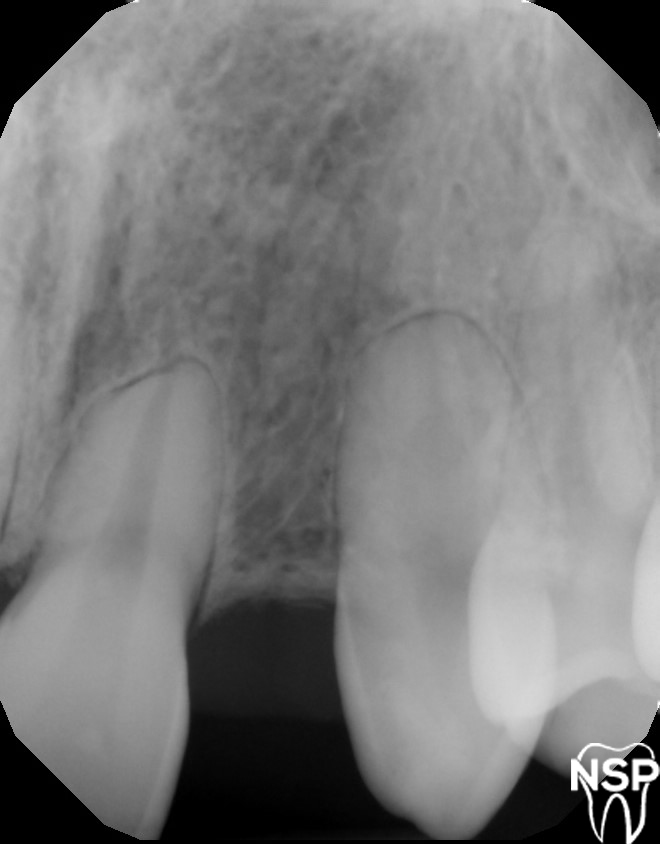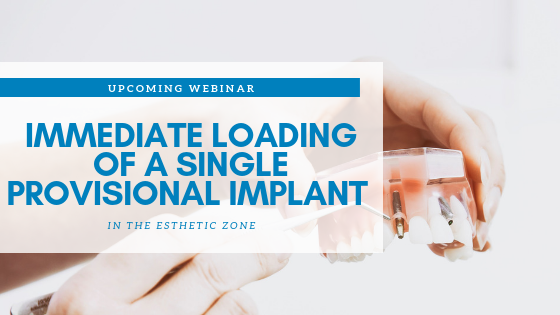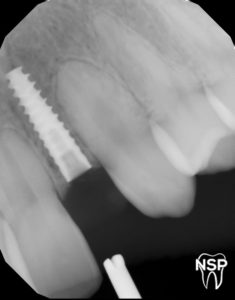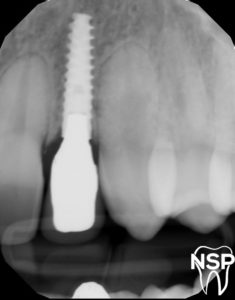Provisional Implants In The Esthetic Zone:
Scientifically documented with high success is the replacement of maxillary single teeth in the maxilla and mandible. When a patient arrives at your office with a broken front tooth, a failing endodotically treated tooth or a tooth with gross caries that is non-restorable. What options are available for the patient? Let us dive into the spectrum of provisional implants.
- Conventional implant placement with conventional loading of the implant
- Immediate implant placement with an early loading of the implant
- Immediate implant placement with immediate loading

Conventional implant placement with conventional implant loading:
Refers to the typical protocol where the broken or an extracted non-restorable tooth, a bone graft is placed allowing time for healing of the extractions site. Once the site has healed, the implant can be set and allow for healing 3-6 additional months. Only then, the provisional and final restorations can my loaded onto the implant.
Immediate implant placement with early loading:
Refers to placing the implant at the same time as the extraction, but we do not restore implant nor load with a provisional until a period (commonly less than 3 months) is allowed to heal. In other words, osseointegration of the implant is allowed to happen during a period before restoration is placed.
Immediate implant placement with immediate loading:
The placement of the implant as soon as the non-restorable tooth is extracted and a provisional is made. The latter sounds like an excellent treatment option to present to a patient. The first thing that comes to my mind is that the patient will be thrilled to have a fixed, non-removable provisional rather than having a “flipper” or “clear retainer” holding the missing tooth.
When are “flipper” or “clear retainer” not the ideal option to privisionalize a missing tooth?
One of the main reasons is because the flipper moves and the patient has a difficult time talking or keeping it in place. The “clear retainer” is hard to place. Sometimes it causes changes on the occlusion, and this itself is another severe problem. The other caveat that patients face is the temptation to chew on the clear retainer. So, the patient has to remove it every time they eat which might cause esthetics issues.
[REGISTER HERE] Upcoming Hands-On Course for Immediate Loading of a Single Implant
Brought to you by Smile Pros and Nobel Biocare.
By attending this course, you will learn:
• About materials, techniques & fabricating provisionals with a predictable result.
• Creating an emergence profile & soft tissue management, occlusion & design of a provisional.Online Webinar | Nov. 6th: Murrieta, CA | Nov. 12th: San Diego, CA
[Important] What To Consider Before Treatment:
The idea of placing a provisional the same day we extract the tooth and place the implant sounds excellent, but can this procedure work for all patient?
- How selective should I be when considering a case?
- Measuring case success under my hands.
- How do I communicate with my surgeon?
- Tailoring treatment plans for similar cases. What will the sequence look like?
- Properly billing the patient.
- Establishing an efficient time frame for the case.
- Communicating appropriately with the patient.
These are some of the questions that you should be considering when you have a case that requires an implant in the esthetic zone.
As a prosthodontist, I get cases referred to me to restore severely angled implants or is not at the proper depth or the patient is not happy with the result. To avoid further complications, we must perform a thorough evaluation and treatment plant before doing any treatment.
Surgical factors of immediate placement:
Let us take a moment and talk about the surgical factors that determine whether an immediate placement is advisable for a patient or what to do if he or she is a candidate. First, evaluate the gingival biotype. A thin biotype has more tendency of having a recession of the soft tissue.
If that is the case, do you need to do a connective tissue graft? Do you always do connective tissue graft?
In my opinion, all patients with thin biotype should have connective tissue graft to prevent an unaesthetic situation in the future. Bone graft: Is it necessary to close the gap left from the difference in diameter between the implant and the extracted tooth? Or will it close over time?
Which type of bone graft would you recommend?
The stability of an implant immediately placed on the anterior maxilla relies on the native bone apical to the root of the tooth to the base of the nose.
If the root is too long to the base of the nose, immediate placement of the implant is likely not possible since will probably lack primary stability.
Also, if the buccal bone is deficient, is not a case for immediate placement of the implant. (Dr. Levine).
10 keys for successful esthetic-zone single immediate implants:
- Esthetic risk assessment.
- Tomographic plan: CBCT and restorative-driven treatment plan.
- Minimally traumatic tooth extraction, without flap reflection (if possible), with evaluation of buccal plate status.
- 3D implant placement in the right available bone both apically and palatally along the palatal wall.
- Use of a narrower (3.3 mm to 4.3 mm) implant versus a wider-diameter (4.5 mm or greater) implant.
- Bone grafting of the buccal gap with a low-substitution small-particle mineralized bone material.
- Facial gingival grafting using a palatal subepithelial connective tissue graft (SCTG) placed in a buccal envelope under the buccal marginal tissue and facial to the intact buccal plate.
- Immediate contour management of the emergence profile from the implant.
- A custom impression coping technique
- Finalize restoration with a screw-retained crown.
Final thoughts:
Understanding the critical factors for the success of the implant in the esthetic zone is essential. Each step can determine whether you have a beautiful and smooth treatment from a massive headache. When an esthetic problem has been created in the esthetic zone, it can be difficult to correct. Consulting with a specialist in these cases can help you understand the process in its entirety.
Join Smile Pros on Linkedin:
We have created an online community Smile Pros on LinkedIn to help dental professionals from all over the world with their cases.
• Exchange ideas, learn, network with other professionals.
• Plus obtaining exclusive CE Credit opportunities with world-renowned speakers.
As a reminder, we will be hosting a hands-on seminar on November 6th & 12th in Murrieta, CA & San Diego, CA regarding Provisional Restorations of Implants in the Esthetic Zone.
This is a great opportunity to ask questions and learn as Dr. Paredes demonstrates how to plan, create and solve a provisional restoration in the esthetic zone.
If you happen to be out of town, join our online Webinar Here – you will still earn CE credits.
About the author:

At New Smile Prosthodontics, Dr. Paredes has done numerous surgical placement and restoration of implants in the esthetic zone. Frequently, he welcomes Doctors who have a question about a case or assists in setting a sequence of treatment for their patients.
Dr. Paredes is a resource for dental professional and patient for the treatment of implant placement, immediate or delayed provisionalization and fabrication of the final crown.
If you have any question, please contact us. We are happy to help out in any way, seriously don’t be shy!

